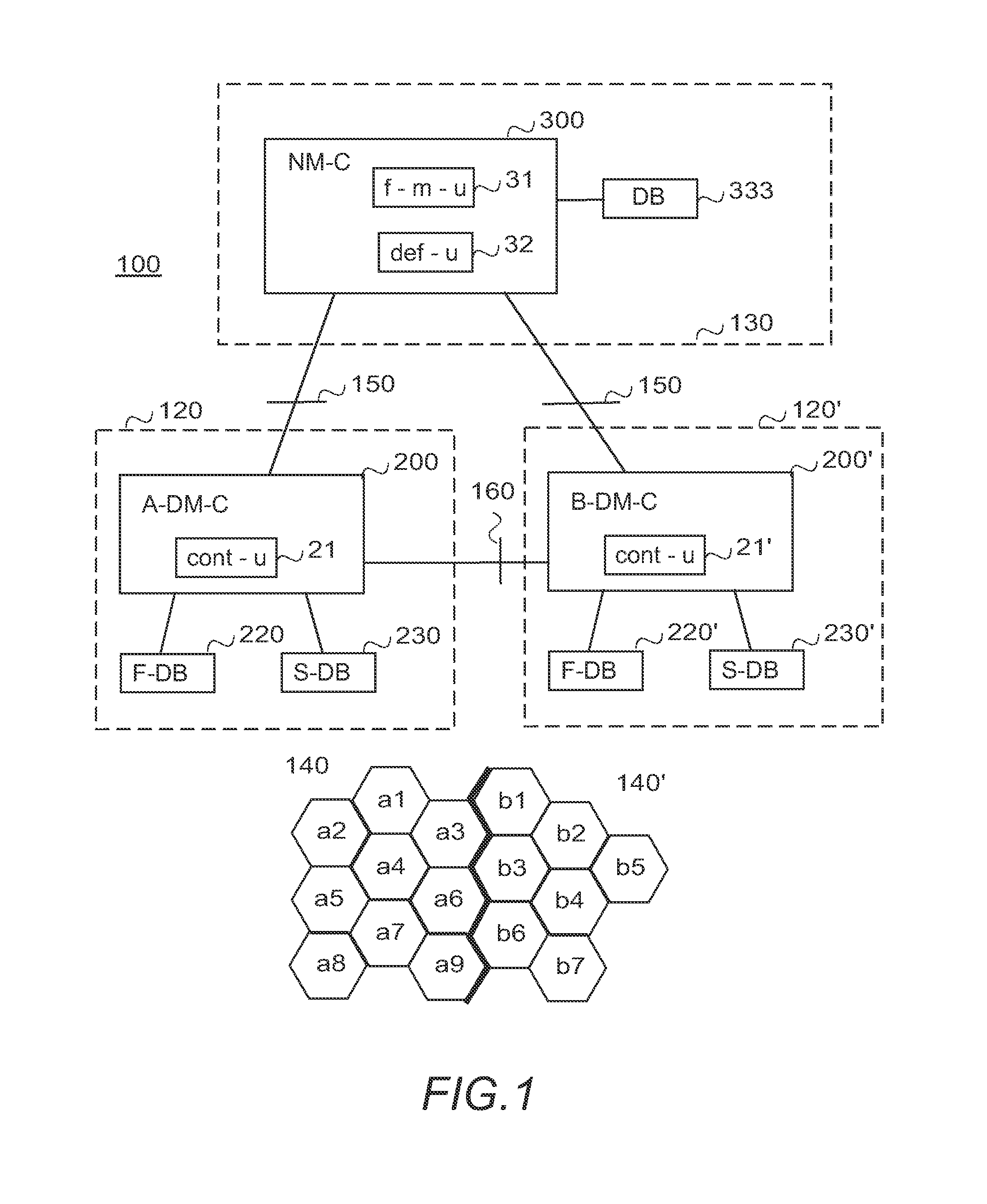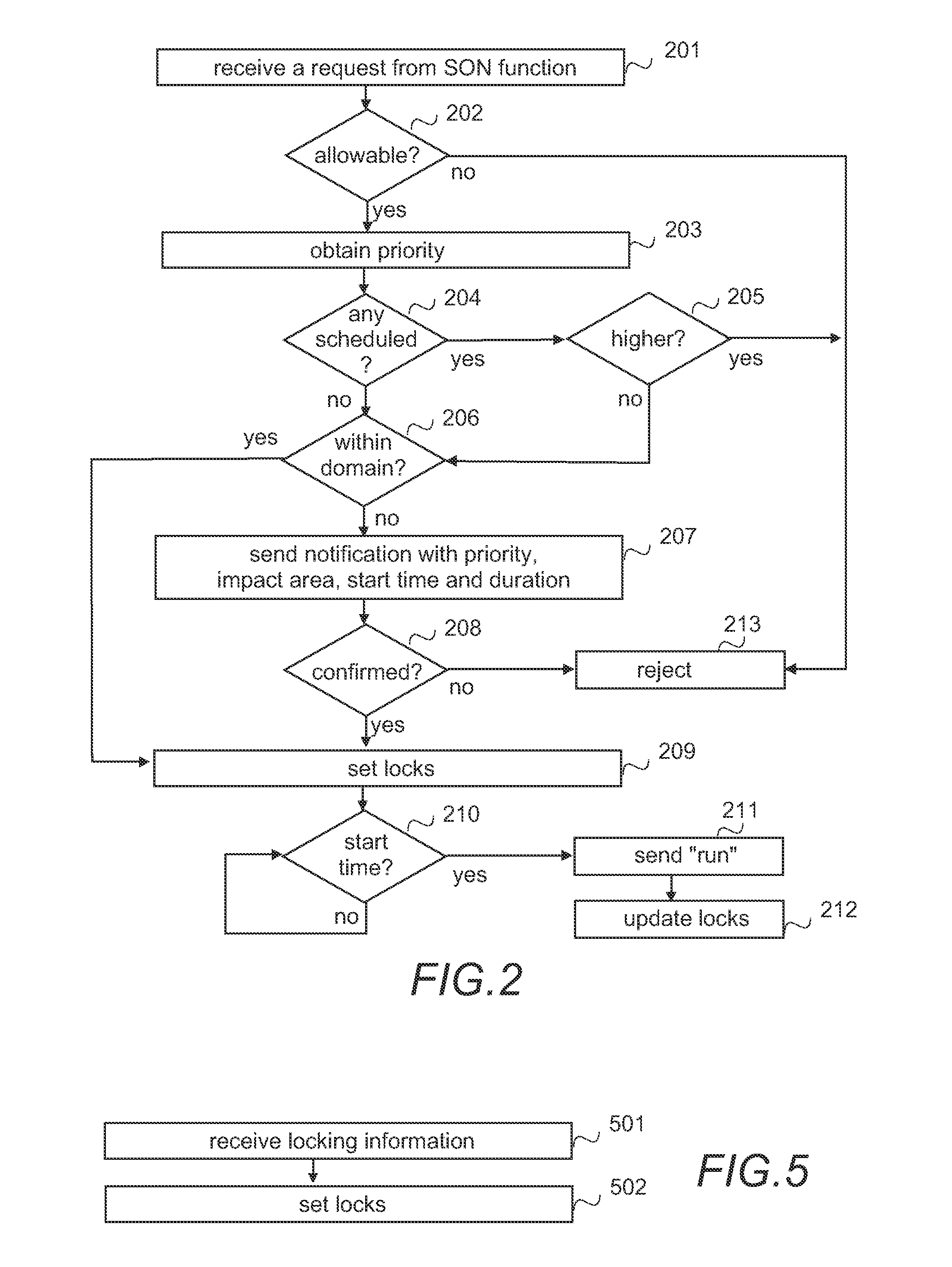Coordination in self-organizing networks
a self-organizing, network technology, applied in the field of communication networks, can solve the problems of increasing the complexity of the network, the amount of network nodes, increasing the operation and maintenance tasks i.e. management tasks, etc., to improve the conflict avoidance/coordination mechanism, less processing capacity, and less information exchange
- Summary
- Abstract
- Description
- Claims
- Application Information
AI Technical Summary
Benefits of technology
Problems solved by technology
Method used
Image
Examples
Embodiment Construction
[0008]The following embodiments are exemplary. Although the specification may refer to “an”, “one”, or “some” embodiment(s) in several locations, this does not necessarily mean that each such reference is to the same embodiment(s), or that the feature only applies to a single embodiment. Single features of different embodiments may also be combined to provide other embodiments.
[0009]The present invention is applicable to any communication system or any combination of different communication systems and corresponding networks and network nodes that support self-organizing network functionality. The communication system may be a wireless communication system or a communication system utilizing both fixed networks and wireless networks or a fixed communication system. The specifications of communication systems and networks, especially in wireless communication, develop rapidly. Such development may require extra changes to an embodiment. Therefore, all words and expressions should be ...
PUM
 Login to View More
Login to View More Abstract
Description
Claims
Application Information
 Login to View More
Login to View More - R&D
- Intellectual Property
- Life Sciences
- Materials
- Tech Scout
- Unparalleled Data Quality
- Higher Quality Content
- 60% Fewer Hallucinations
Browse by: Latest US Patents, China's latest patents, Technical Efficacy Thesaurus, Application Domain, Technology Topic, Popular Technical Reports.
© 2025 PatSnap. All rights reserved.Legal|Privacy policy|Modern Slavery Act Transparency Statement|Sitemap|About US| Contact US: help@patsnap.com



